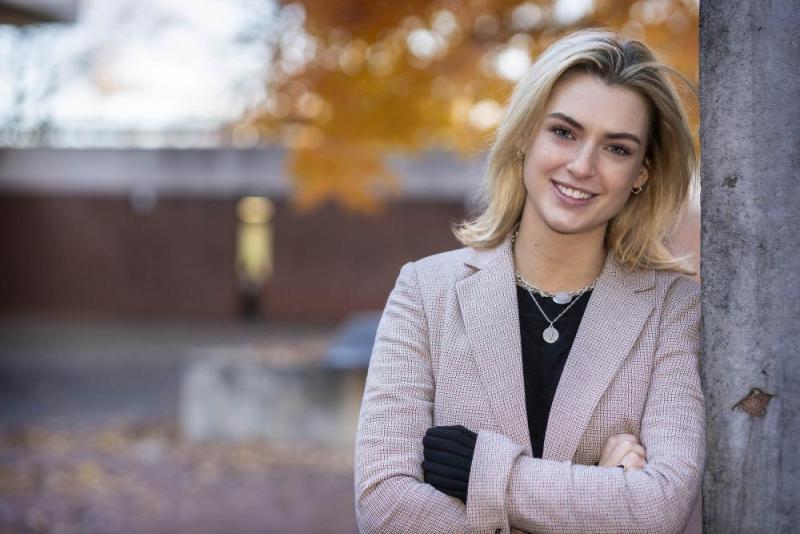Award Recipient’s Research Focuses on Female Artists from the 1980s

Ansleigh Graeff wants to rewrite art history – or at least a small piece of it.
Graeff, a fourth-year art history major and a recipient of a University of Virginia Arts Award, has taken up the cause of a trio of female artists from the 1980s who she argues have been overlooked.
The University Undergraduate Award for Arts Projects expands students’ opportunities for creative inquiry and showcases significant accomplishments in the arts. Student projects are funded up to $3,000.
Graeff, of Roanoke, came to UVA fascinated by human behavior and social history and found an outlet in art history. Her interest in this project was piqued by an overview of the history of art in the 1980s that she found too meager.
“A quick overview showed a lot of negative critical views,” she said. “It portrayed the decade as either abundant with culture or just desolate, a black hole of dead art and cultural production and brief sensationalism.”
And missing from that brief overview was discussion of female artists.
“I want to address the exclusion of female artists from public discourse, specifically surrounding 1980s art because it was a unique moment in art and general history, where tokenism rose,” Graeff said. “In the 1980s, if women were not creating overtly feminist or otherwise politically activating art, they were excluded from discussion entirely. I think their exclusion remains pertinent to today’s political discourse; we must stop seeing members of historically marginalized groups as valid only to the extent that they function as an effective token or representative.”
She selected the trio of painters – Judith Glantzman, Judy Rifka and Suzanne McClelland – because they had been left out of the canon and because they represented a philosophical rebellion against a masculine approach to art.
“The women artists of that era were trying to break down structures, binaries,” she said. “I argue that their works epitomize the feminine aesthetic, which challenges the rhetoric of the masculine norm. … Rather than objectify and solve the problem, as is the masculine approach, … the feminine embraces the process and is impartial to the outcome. In fact, central to the feminine mode of painting is the rejection of a known outcome.”
When Graeff talks about feminine and masculine painting, she said there are males who paint with a feminine attitude, such as Andy Warhol, and female artists who paint with a masculine attitude, but Graeff said women painters had their work judged against male standards to be featured in museums and galleries.
“When a feminine visual mood was popularized, it was also headed by male artists,” she said. “The discussion of female artists in the ’80s was largely nonexistent,” she said. “To rewrite this history, for me, means interrupting a longstanding tradition of fallacious discourse provided by the art institution that is badly in need of reparation.”
On her journey to reexamine modern art history, Graeff went to New York City last summer to research the trio and interviewed Glantzman, who was raised on Long Island and started exhibiting her work in the East Village art scene in the early 1980s.
“Glantzman was not trying to write a feminist narrative,” Graeff said. “They were trying to move away from an accepted conformity.”
Graeff said Glantzman worked with others and approached art as art.




